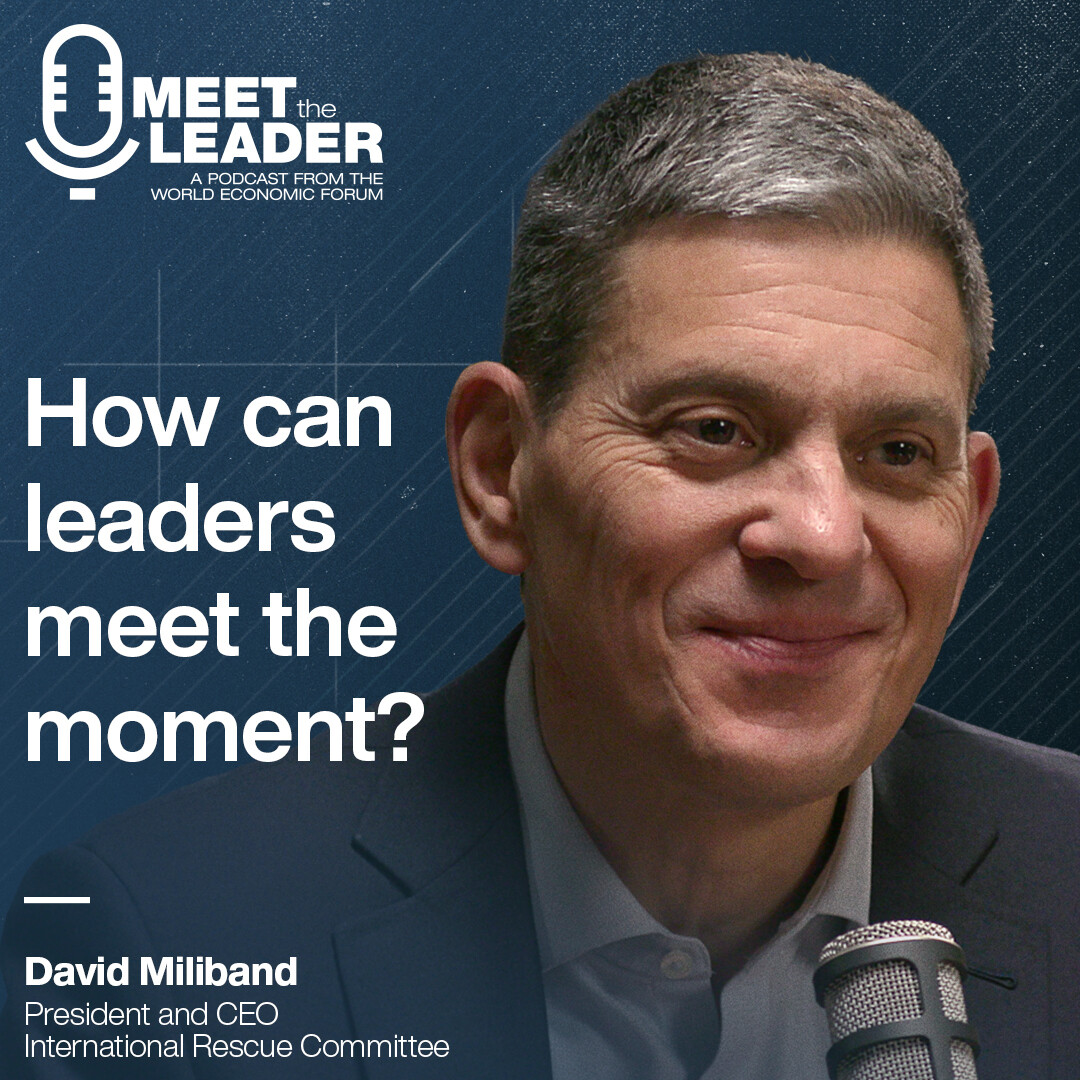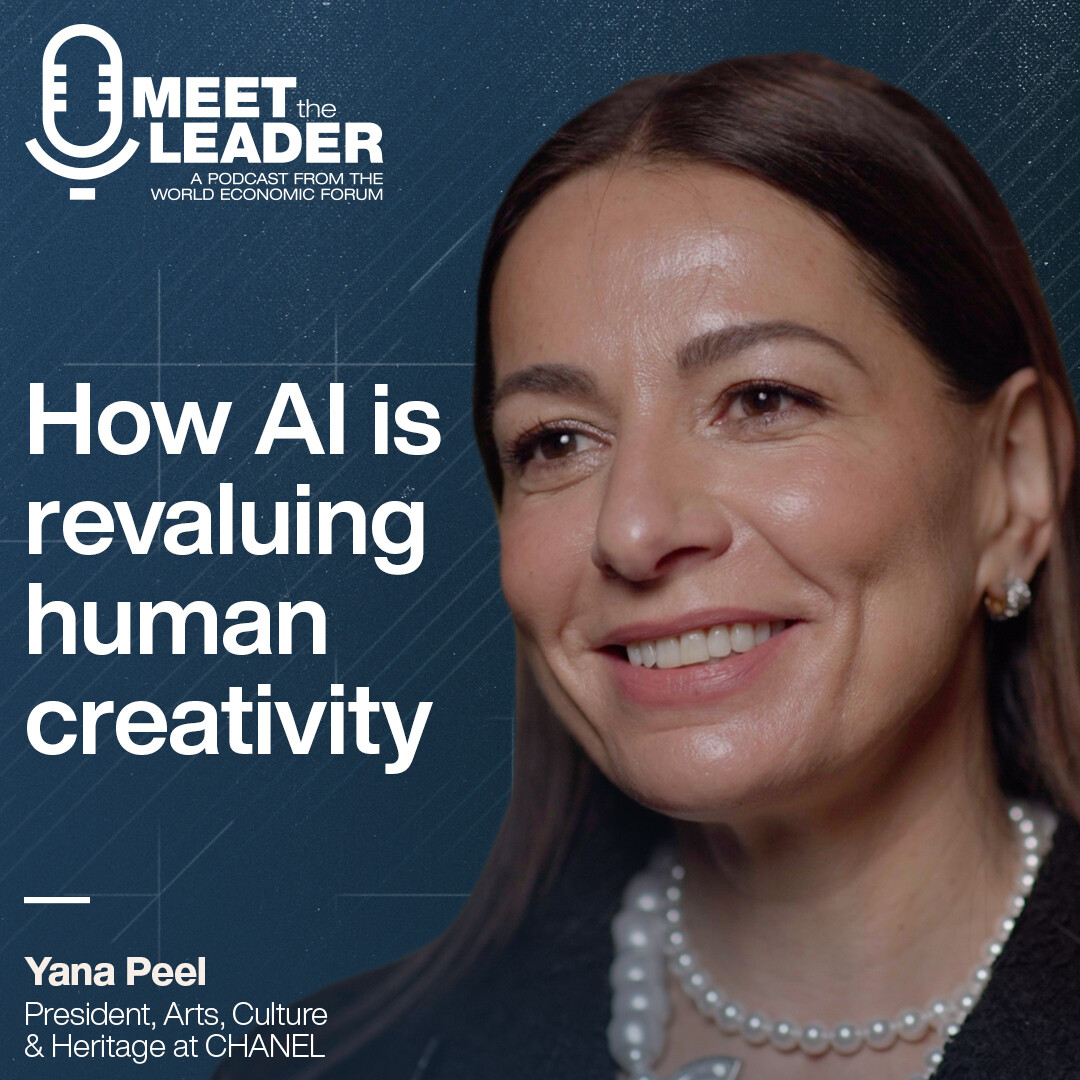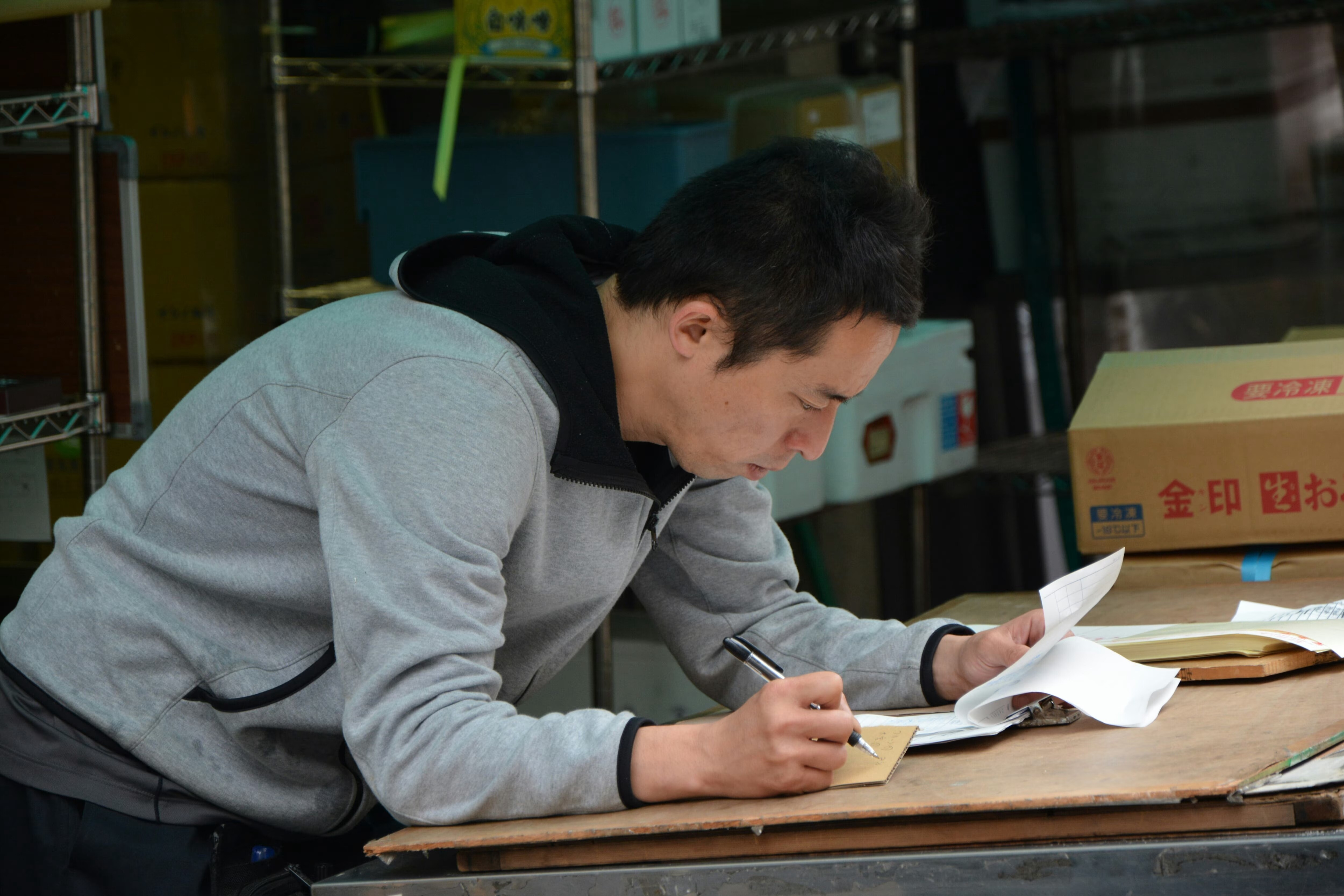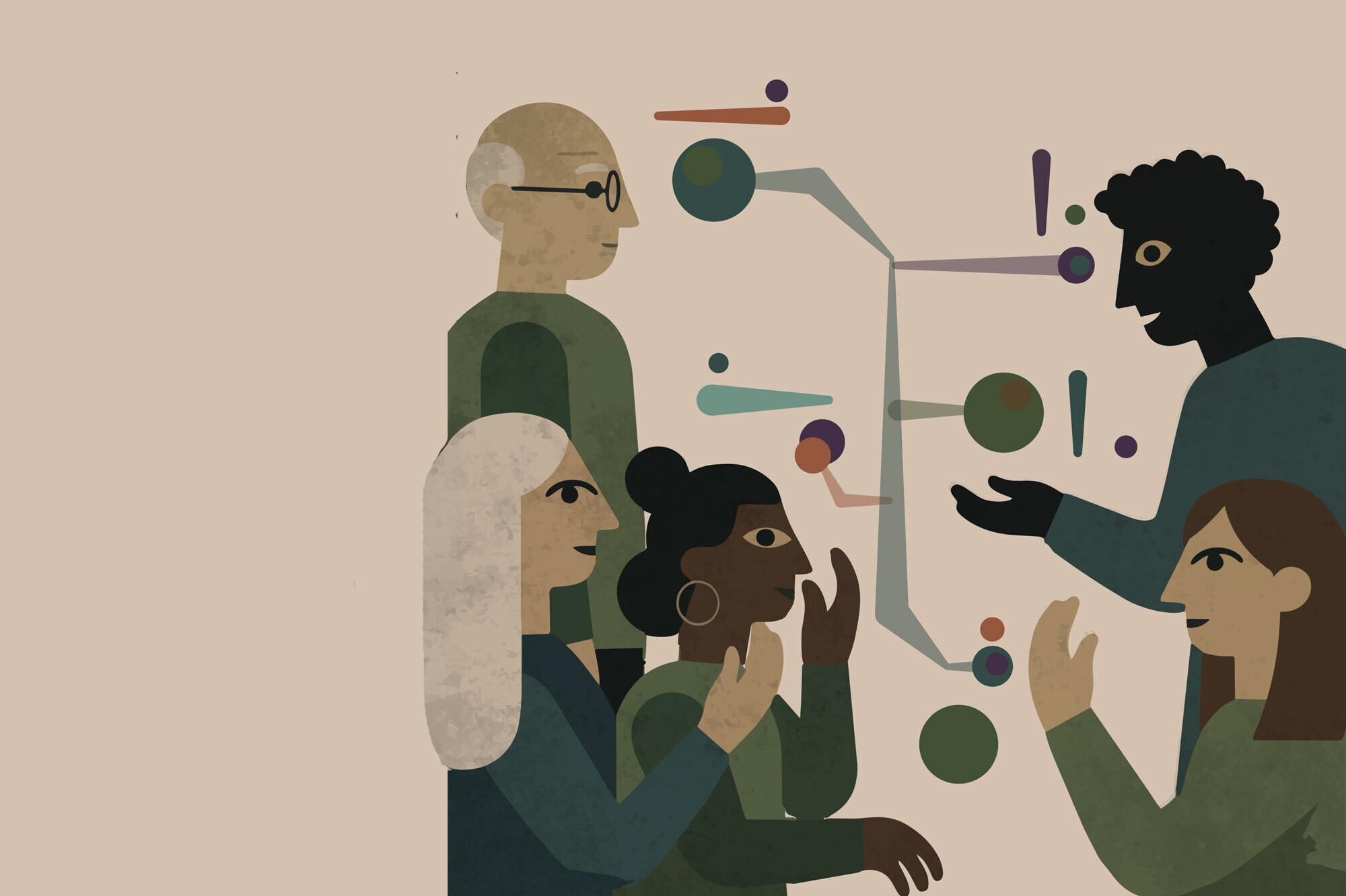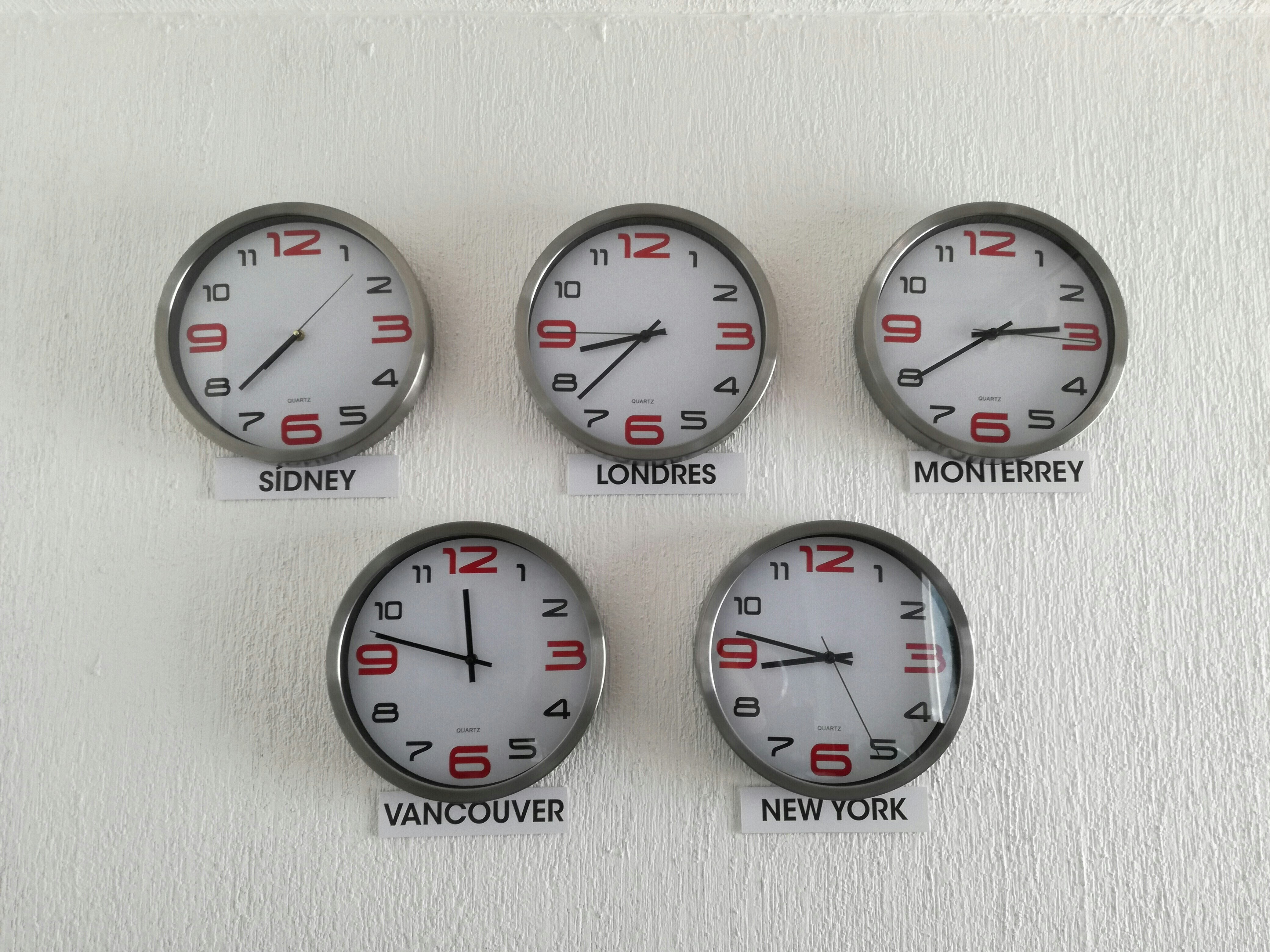'Global, frictionless and free': How digital dollars will reshape economic activity, humanitarian aid and more
ポッドキャスト・トランスクリプト
Linda Lacina, Meet The Leader Welcome to Meet the Leader, a podcast where top leaders share how they are tackling the world's toughest problems.
Today's leader is Jeremy Allaire. He is the co-founder and CEO of financial technology firm Circle. He'll talk about digital currency and the impact it can have on everything from humanitarian efforts to how it can shape futures for small businesses and economies.
Subscribe to Meet the Leader on Apple, Spotify and wherever you get your favorite podcasts. And please take a moment to rate and review us. I'm Linda Lacina from the World Economic Forum and this is Meet the Leader.
Jeremy Allaire, Circle Storing and moving money, making and receiving a payment, will essentially become instant, global, frictionless, and free.
Linda Lacina, Meet The Leader Jeremy Allaire is the co-founder and CEO of Circle. That is a global financial technology firm that operates one of the largest dollar digital currency payment systems in the world: USDC. He talked to me earlier this year about exactly what that is, and also about stablecoin.
If you're not familiar, stablecoin is a cryptocurrency that is designed for stability, one that is usually pegged to a commodity or currency, and it is one that has already seen billions of digital dollars in economic activity.
It's one that can also have applications beyond how things like small businesses are already using it. Circle has a special partnership with the UNHRC, the UN's refugee agency, using stablecoin for humanitarian purposes is a solution that can be more and more important as political shifts and climate change drive up the numbers, the displaced and the unbanked all around the world.
And of course, to grow stablecoin, we will need big shifts to build everything from awareness to trust to adoption in this new currency. He'll tell us all about that. But first, he'll tell us more about stablecoins and what we can learn about what's ahead from some of Circle's recent research.
Jeremy Allaire, Circle This year is our second year of issuing a kind of annual report about the State of USDC. For those that aren't familiar. USDC is what's called a stablecoin. If you're familiar with the concepts of cryptocurrency, people are familiar with things like Bitcoin. While stablecoins were designed to basically take a traditional currency, what are often referred to as fiat currency, like a dollar or a Euro, and essentially mimic those as digital currencies that work on the internet. And instead of something being unbacked, it's actually backed by a dollar. And so USDC is the largest regulated dollar stablecoin in the world, and it supports an enormous amount of economic activity on the Internet. Over $13 trillion of payment transactions have been done using USDC.
So in this annual report, we're really talking about some of the incredible developments that have happened in the last year with this technology. You know, there are a lot of things I can touch on there. I think big themes are an incredible amount of growth around the world. So in every region of the world, from Southeast Asia to Latin America to Africa, the Middle East, and developed markets as well, the demand for this new kind of digital money that works directly on the internet, the same way that we can exchange an email or text message or other things, this new kind of digital money, these digital currency dollars, are attractive around the world because they allow people to hold value in a dollar. (And we're in a world where there are a lot of currencies that are struggling.) And they give the individual or the firm that's using it the efficiencies of sort of the internet as a medium of exchange. And so the kind of things that everyone has become accustomed to and how they communicate and share data, they're now able to do it a little bit more efficiently globally.
So we've seen a lot of this growth around the world. We've seen year over year, I think, 60% growth in the number of kind of meaningful users that are holding and using this, and the amount of issuance and redemption grew to almost $200 billion over the last year. So a lot of growth there. And we talk about a lot of other things in the report -- the regulatory developments is a really key thing. You know, there's been a lot of questions on how do you regulate digital assets, how do you regulate the crypto industry. And within what we do this area of stablecoins, there's been regulations that are coming into effect throughout 2024 in almost every major financial market centre in the world. So this is going from a technology that was, you know, broadly Wild West when I started ten years ago and is now really maturing into something that will be an integral part of the global financial system.
Linda Lacina, Meet The Leader What was something that was surprising to you from the report?
Jeremy Allaire, Circle We've been surprised at the amount of what I would call kind of small and medium enterprises around the world that are choosing to adopt this technology. And it's sort of surprising because a lot of times technologies are, on the internet, at least they start with like the consumer, you know, the consumer is the first person to use Facebook, or the consumer is the first person to use whatever. And then the businesses come later.
But we're really seeing small and medium businesses adopt this. And I think it's because they don't have the burdens of a big company and all the kind of red tape that goes into it, and the economic benefits of instant cross-border payments and being able to do that with dollars in a much more efficient way than they can get from the traditional banking system, is just really attractive. So we're seeing all these corridors around the world, from Latin America to Asia, from, you know, Middle East and Africa and other quarters where we're really seeing those kinds of users adopting this. I think that was really surprising.
I think another thing is we've seen this growth in the humanitarian applications of this technology, and it's one of the most exciting new developments of the last year. You know, where major UN agencies, international aid agencies as well, are using this as a better way to distribute digital cash, in a sense, to the people who need it the most. And so that's a kind of breakthrough that is really powerful, very motivating, very mission aligned with who we are. It was very exciting to see some of those things get launched in 2023.
Linda Lacina, Meet The Leader You mentioned the humanitarian applications for stablecoin. Why don't you take us through some of the partnerships that circle already has? You've got some really strong ones.
Jeremy Allaire, Circle Working with a number of different players, we helped to create a solution that allowed the UNHCR, the High Commission for Refugees, to distribute aid directly to displaced refugees from Ukraine. And so obviously, a situation where there's millions of millions of people who are displaced, many of them are displaced out of their own country, they're displaced out of the banking system, and they need a way to be able to receive aid. And what we were able to do with a blockchain technology partner, another forum member, Stellar and Stellar Development Foundation, as well as a leading money service company, which is Moneygram, create a solution where essentially the UNHCR can push digital dollars directly to aid recipients' digital wallets. All they need is a mobile device and they can be in any country. They can be wherever they've ended up, and they can receive this, and then they can hold that value directly on their digital device as these digital dollars. And when they need it, they can literally go to any location in almost any country in the world and get local currency. And so, a very, very powerful way to reach the people who need it the most as displaced refugees, they have mobile devices, but then they're displaced in terms of the way their identity works within, you know, the financial system and other things.
A very powerful way to reach the people who need it the most.
”And so this is something that's made possible by this technology in a unique kind of way. And we've also seen programs initiated for a distribution to earthquake victims in areas like Syria and Turkey. And previously as well, you know, humanitarian aid into Venezuela, to medical frontline professionals who needed assistance supporting some of the Covid induced medical crises there. So in a number of cases, we've seen that emerge, and we're now seeing a wide array of major organizations that deal with, in particular, humanitarian crises, who are looking to stablecoins as a better way than cash because cash can be corrupted. A lot of the money doesn't end up in the intended recipients hands. It's not traceable. And so it has a lot of challenges with it. So this concept of actual digital cash is really powerful. And so that's been something that we've been really excited about, some of the partnerships and what we've been able to bring online.
Linda Lacina, Meet The Leader And how can solutions like this sort of help with the scaling of stablecoins in general, like how do they build trust in it? How do they sort of just get people used to using it? What are your thoughts on it?
Jeremy Allaire, Circle I think like any new internet technology, you know, initially it feels unfamiliar and then more people around you use it and then it's like, how did I ever not live with this?
And you can think about the advent of the web or email or text messaging or social media and other things, which kind of come on that way. And I think we're in a similar place with this technology.
So the first ism like a lot of other internet technologies, at first they are kind of complex and difficult to use, and then they become simpler to use.
So stablecoins, for example, are going through what I like to call the dial up to broadband upgrade. Right? Dial up is really hard from how to use the internet, if you remember. And then broadband really made it simple and fast for the better experience.
So this technology is getting to that point where you don't need to know anything about blockchain. That's like scary, right? So the end user application, where you can kind of access this and use it are becoming much simpler and accessible around the world.
The trust piece, though, is really key because we're not just talking about a text message or sharing a photo. We're talking about money. We're talking about the value we store.
”The trust piece, though, is really key because we're not just talking about a text message or sharing a photo. We're talking about money, we're talking about the value we store.
And so there I think actually regulation is really critical. And so having clear regulation around the world where individuals know, okay, someone who's issuing one of these digital dollars or digital euros, whatever it might be, is actually held to the same kinds of standards that the biggest financial institutions in the world are held to, that they know the money is safeguarded, that they know that there's significant risk management around the operations of those firms, the personnel of those firms.
That's really important. And I think we've certainly been at the forefront of becoming a regulated player. And so I think that's important: the combination of kind of legal and regulatory certainty combined with more seamless, effortless user experiences.
And then I think it takes on the same kind of growth path that you've seen from other significant kind of internet technology utilities that very rapidly got to billions of users. And I think that's on the forefront in the next couple of years.
Linda Lacina, Meet The Leader We saw during SARS, during COVID, there was an increase in people using digital payments and things like that, you know, so people get used to it and then they start to trust it. How important is that sort of that habit, that building those, to that familiarity piece?
Jeremy Allaire, Circle It's critical. I think every great kind of network technology, you know, has that kind of positive feedback loop of you begin to use it, you're kind of the word of mouth, other people who begin to use it. Then you kind of have this virality that's there, and then it establishes a kind of comfort level and usage, and then it gets very sticky.
What's interesting about money and about money protocols on the Internet is that they also have a lot of those same intrinsic kind of network effects. And so there were lots and lots of different places you could post and share your photos. But when Facebook kind of became a safe, trusted place, at least it was thought of that way.You know, people said, okay, well, my friends are here and they have a good experience. And so you kind of have that. And I think that's certainly what we're starting to see with USDC. And what we're starting to see with stablecoins is that there's a kind of familiarity there.
Now, what's interesting is that the adoption is happening faster in emerging markets rather than in, say, the United States or in mainland Europe. And I think the need is greater. It's similar, actually, if you think about how WhatsApp developed. WhatsApp, like it was nowhere in the United States or it was nowhere in Europe, but it was in emerging markets where essentially there were kind of predatory costs from sending text messages and where, you know, effectively it was like a cheaper way and a faster way to kind of text message across any different kind of carrier in these markets. And so it kind of blew up first in places like Brazil and in India and in a lot of these places. And I think that's an interesting thing that we're also seeing with stablecoins is they're happening in those places first, and then eventually it just becomes a global phenomenon.
Linda Lacina, Meet The Leader What else do you think is needed to scale stablecoin? And I guess in your mind, where would you like to be in five years, if you could have a dream milestone point.
Jeremy Allaire, Circle So the way we think about this is that overall, blockchain networks, which are essentially a new infrastructure layer on the internet, like we have these kind of information networks, like the web protocols, and we have kind of communications network through, voice and video over internet protocols. And those are kind of now with the air we breathe, right?
Blockchain networks are this value exchange kind of infrastructure layer. That's maturing very, very fast.
The power of it is that building on top of it, you effectively can create an internet financial system where literally everything from the base layer of value, a dollar or a euro to the arrangements we have around money, borrowing and lending, saving and investing, and a lot of the other kind of building blocks that we have in finance can actually be brought into this blockchain infrastructure. And so over time, the really exciting thing over, say, a five-year period is I think a couple things happen. The first is that essentially storing and moving money, making and receiving a payment will essentially become instant, global, frictionless and free.
Storing and moving money, making and receiving a payment will essentially become instant, global, frictionless and free.
”Right now, there's time delays, there's a tax and toll through intermediaries. Businesses pay 3% fees just to receive a payment through a plastic card or whatever it would be. So I think you really see sort of like we've seen with data and information communications essentially that over five years, it gets to a point where basically you can move value whether you're an individual sending out 25 cent payment in Ghana for purchasing something from a street vendor, or you're a multinational sending $1 billion. The same kind of infrastructure becomes available. And that's really exciting.
And when you think about the growth of the internet, once moving data became effectively frictionless and free, once publishing information of effectively where the marginal cost of publishing and new information kind of went down to zero, the amount of information that became available in the world went like a million. It had this incredible exponential growth. The amount of communications between people in the world went exponential. So you had these huge things. When the marginal cost goes to zero and the speed goes to effectively the speed of the internet, you have these huge discontinuous jumps. I think that's going to happen in the world of moving value. And that translates from my perspective actually, to increased economic activity when you can move and exchange value essentially frictionless at almost no cost. The velocity of money and the amount of economic activity that can happen will also grow in that way.
That's a very exciting concept, and we don't quite know this super high velocity of frictionless money. Like we don't quite know what that's going to do, what kind of opportunities that's going to create.
And the other is a more abstract concept that we talk about, which is this idea of programmable money. And the analogy I like to use is that -- this is back in the 90s -- they talked about, you know, mobile is going to be the future, but no one really knew what that meant. Even in early 2000s, people had a BlackBerry or a Nokia phone or a Samsung smartphone, but they were not useful. And people talked a vision, but they didn't really know what was going to happen. And then a convergence of technologies made an effortless, fast, seamless user experience on mobile possible. That was the obviously the introduction of the iPhone.
But what was powerful about the iPhone is it created a new kind of surface area where developers and engineers and entrepreneurs could create things that hadn't been possible before. If you remember the early iPhone campaigns, there's an app for that, there's an app for that. And it sort of was this idea that, oh my God, people are inventing things like crazy that just were impossible to do until you had this new compute kind of environment.
Blockchain networks, smart contracts, stablecoins, this kind of infrastructure, essentially, for the first time in human history, creates programmable money. And what I'm excited about over a 5- to 10-year period is that essentially the same thing is going to happen. Developers, entrepreneurs, builders are going to invent new uses for how money works in the internet that we can't even anticipate. And so I'm often asked, like, can you predict what's going to happen? And I say, no, I can't, because I can't predict the creativity of eventually hundreds of thousands of builders and entrepreneurs. And so we really get excited about that idea and what might emerge from that.
Linda Lacina, Meet The Leader You are sort of the original digital native. There's a few things I want to read them out so I don't get them wrong. You used messaging apps all the way back in the 90s. You helped create one of the first online video platforms. You wrote a policy paper that was supporting the creation of a national information network. All of this. Does your sort of experience in sort of understanding about how the internet evolved, has that helped you understand what stablecoin needs to expand?
Jeremy Allaire, Circle Absolutely. It's all part of the same basic problem space, which is we have an open global network. And that open global network connects people and entities together with software and with Internet protocols. And the nature of that software and the nature of those protocols essentially take on more and more roles in society.
First, it was just I want to send a message back and forth. Eventually, it was I want to be able to publish structured information. Then it became I want to replace the infrastructure we used to communicate, and then it was create forms of communication that weren't even possible before the onternet. And then it became a surface area for conducting commerce.
So you had this evolution on this infrastructure. It's always been, for me, the idea of an open, global, decentralized network and what you can build with open software, with open source technology that anyone can access as a public good, as a public utility. That's been an organizing theme for me since I got involved in the internet in 1990, and I think the same thing holds true. What brought me into this space almost 11 years ago was, wow, I saw a technology like Bitcoin and said, I can see how a new infrastructure layer on the internet is going to emerge, and it's going to be an infrastructure layer on the internet, like the web, like the communications layer. But it's going to be for value exchange.
So how do we take the best forms of money we have in the world, like a dollar? And how do we then give them the openness of the Internet and bring this together? And so stablecoin is really just a new protocol for dollars on the Internet. And just like we have protocols for photos and messages and other things, this is like a a way to upload your dollars to the Internet and have a protocol that allows that to move around. And to me, it's in some ways no different than uploading what was a TV show, from a broadcast satellite or a cable that went into someone's home, to internet streaming. It's just, how do you digitize these fully and an internet native way and then make them open and accessible? It's just an evolution of the same themes and threads I'd like to sort of say that I've been pulling on for over 30 years.
Pause and listen. I think we get to better outcomes. We hear more perspectives. We resolve conflict. We get the best ideas on the table.
”Linda Lacina, Meet The Leader Is there a piece of advice that you've always been grateful for that has been help throughout your career?
Jeremy Allaire, Circle I think the best piece of advice has been to pause and listen. I think we get to better outcomes. We hear more perspectives. We resolve conflict. We get the best ideas on the table. We disarm fear. Pausing and listening is the probably the best advice I had. And that's something where I've matured over my career, for sure.
Linda Lacina, Meet The Leader That was Jeremy Allaire, thanks to him. And thanks so much to you for listening. A transcript of this episode and my colleagues' episodes of Radio Davos are available at wef.ch/podcasts.
This episode of Meet the Leader was presented and produced by me with Juan Toran as studio engineer in Davos, Jere Johansson and Taz Kelleher as editor and Gareth Nolan driving studio production.
That's it for now. I'm Linda Lacina with the World Economic Forum. Have a great day.
Jeremy Allaire is the co-founder and CEO of Circle, a global financial technology firm that operates one of the largest dollar digital currency payment systems in the world -- USDC. Stablecoin is already seeing billions of digital dollars in economic activity and he talks about what we can expect next, including emerging applications for humanitarian aid. He’ll talk about Circle’s special partnership with the refugee agency UNHCR, and how new approaches for social impact could be more and more important as political strife and climate change drive up the numbers of unbanked around the world.
その他のエピソード:
「フォーラム・ストーリー」ニュースレター ウィークリー
世界の課題を読み解くインサイトと分析を、毎週配信。
もっと知る 経済成長すべて見る
Naoko Tochibayashi
2025年12月20日

